Fighting with literal monsters is the cornerstone of not only fantastic literature, but some of the oldest stories ever. If Hercules isn’t beheading some creature, then he’s at least thinking about it. His bros Beowulf and Perseus were into that sort of thing, too. But when one switches from myth to modern, post-modern, and what we call literary fiction, then they’ll find the literal dragons, monsters, and beasts have been banished into the past or other genres.
Except for every once and while, when beasts are famously at the forefront of great works of literature. Here are five beasts seemingly at home in fantasy or science fiction that instead occupy works of literary fiction.
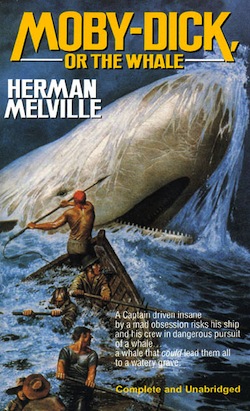
The Whale from Moby Dick by Herman Melville (or Moby Dick from The Whale)
The most famous novel of all time features the pursuit of a destructive monster as the centerpiece of its epic story. The narrative concerning the pursuit of revenge against this White Whale takes on many forms, but it’s fairly easy to think of Moby Dick as a kind of sea dragon, with Ahab misconceiving himself as a sort of St. George. Moby Dick is both a bonafide beast and a real sea creature; a sperm whale in fact. In real life, a sperm whale was allegedly responsible for the sinking of the whaling ship Ann Alexander in 1851, the same year Moby Dick was published! Melville based the events of his novel on another incident some 30 years prior, in 1820, when the whaler Essex was supposedly sunk by a whale near Nantucket. There are several non-fiction books about this incident, the most famous being The Loss of the Ship Essex, Sunk by a Whale by Owen Chase.
The only two recorded incidents of a sperm whale destroying a ship are connected to Moby Dick; one as the inspiration, and the other, eerily, the same year the book was released.
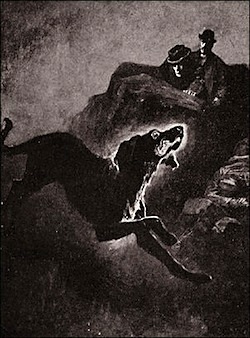 The Hound from The Hound of the Baskervilles by Sir Arthur Conan Doyle
The Hound from The Hound of the Baskervilles by Sir Arthur Conan Doyle
Interestingly, the hound from the recent episode of Sherlock and the original hound from the novella are actually quite similar. Both are, at the end of the day, actually just big dogs. In the original story, the hound is thought to be a spectral creature haunting the moor for decades. In the end it is revealed to be neither as ghostly nor dangerous as everyone seems to think it is. After shooting the animal to death (whoa!) Holmes discovers a phosphorescent mixure on the animal which is what caused it to glow. In the most recent incarnation, there’s an even more interesting explanation. (Check out spoilers here!)
The hound is not the only beast which Holmes encountered in the canon which stressed realistic crediblity. In “The Speckled Band” there’s a snake which is trained to respond to certain whistles from its master, and in “The Copper Beeches” there’s mastiff that supposedly will eat people. Watson shoots that one in the head.
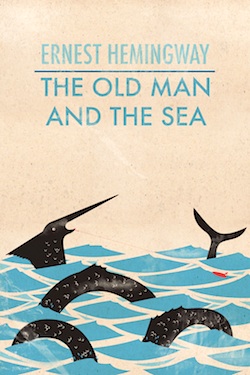 The Fish from The Old Man and the Sea by Ernest Hemingway
The Fish from The Old Man and the Sea by Ernest Hemingway
The sheer size of the fish from The Old Man and the Sea is probably the main thing it has going for it in terms of being a fantastical beast from the deep. If you’re like me, you read this one in one sitting and were the most sad when the sharks come and eat half of the damn fish away. The fish from The Old Man and the Sea is also great because of the relationship the main character has with it. They look at each other, talk to each other, and develop a relationship. The fish edures as a fantastical beast beacuse Hemingway’s old man is defined by the fish. And that’s what monster stories are all about; we see ourselves in the creatures we seek to destroy.
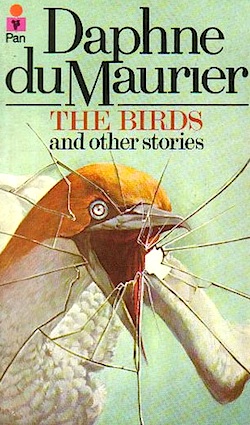 The Birds from “The Birds” by Daphne du Maurier
The Birds from “The Birds” by Daphne du Maurier
Taken from the 1952 short story collection The Apple Tree, the novella “The Birds” depicts sea birds attacking people in Cornwall, England. In a fantastical move, the season suddenly changes from fall to winter and the town slowly becomes under siege from seagulls and their cohorts. The story in some ways can be read as one war veteran seemingly unable to get away from aerial assault, but this is also a straight monster story. The idea of subverting idyllic creatures of flight into terrible monsters didn’t go unnoticed by Alfred Hitchcock. Naturally, the film The Birds is based on du Maurier’s novella. Though very different from the source material, the chilling value of the classic film would probably not have hit home had the literary source material not been so strikingly subtle.
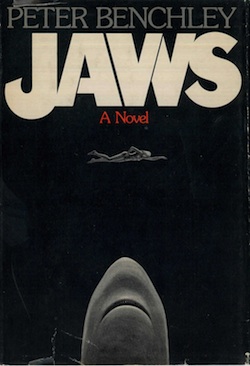 The Shark from Jaws by Peter Benchley
The Shark from Jaws by Peter Benchley
I have one very dear friend who is the only person I know who has read the novel Jaws and not seen the film. But Jaws the book and Jaws the movie might be the best example to disprove the rule “the book is always better than the movie” if only because no one (save for the one person I know) remembers the book better. Intially conceived as work of non-fiction detailing various real-life shark attacks, Benchley was convinced to turn the concept into a full-blown novel. This makes Jaws a literary cousin of Moby Dick insofar as real life events inspired and orbited the release of the novel. And though it is now impossible to think of Jaws without that iconic impending doom music from John Williams, it began its life as a kind of scholary project; making Jaws perhaps the most legit literary beast of them all! (Notably, “Jaws” is never mentioned as being the actually name of the beast. Instead, it is simply; “the Shark.”)
What other literary beasts are your favorite? Tell me below (no talking animals!)
Ryan Britt is the staff writer for Tor.com. He is a beast in the lair that is Stubby the Rocket.










The carnivorous floating plant-island from Life of Pi.
Only snobbery stops The Life of Pi NOT being classed as at least partially speculative. Why is “fantasy” constantly used as a synonym for “subliterary”? C’mon, Tor, fight back a little!
@2 We are fighting back! That’s the nature of this column! :-)
I’d consider Life of Pi to be magical realism, myself… which is what the literary snobs call a fantasy novel that they like, but can’t bear to call it fantasy, because everyone knows that fantasy is bad.
Here’s what I think: Is Life of Pi literary? Yes. Is it fantasy? Also yes. The two aren’t mutually exclusive.
If you want a proper science fictional equivalent of moby dick, which i do, then it’s worth checking out bruce sterling’s involution ocean. Never seen this talked up much and it doesn’t even have a wiki entry but it’s great, the setting he creates is unique and fascinating being a huge meteor crater with an ocean of dust and containing giant sea/dust anemones.
A thought that I forgot to bring up when talking about “magical realism”:
A friend once tried to convince me that Neil Gaiman was magical realism, on the sole basis that she liked his writing and didn’t like fantasy.
Here was my reaction:
Me: But Neil Gaiman calls himself a fantasy writer. Not a literary writer, not a magical realism writer– a FANTASY writer.
Other Person: Well, he’s wrong.
M: Really?
OP: Yeah.
M: Really.
OP: …That’s what I just said, didn’t I?
M: So, what you’re saying is that you know what genre Neil Gaiman writes in, and if he– the author– says differently, then he’s wrong, because apparently you know more about his own writing process than he himself does?
OP: Yeah… isn’t that what I just said?
M: Wow. I’d like to see you say that to his face. That takes cojones.
…Needless to say, we changed the topic of conversation shortly after that.
I guess there’s always Cujo. Like the Hound of the Baskervilles, an ordinary dog that acquires a kind of mythological stature. Ooh, and Shardik too.
“The Birds” is what made me afraid of birds, especially those annoying grackles we get around here.
Some other beasts I like: The Questing Beast from Le Mort d’Arthur, Cerberus, and Grendel from Beowolf and the novel by John Gardner.
@7 Thought about including Cujo. :-)
@8
Grackles! My sister’s cat used to tango with Grackles when I was a kid. My cat was too afraid of them.
IanPJohnson @6: You are correct that Gaiman is a fantasy author. But that’s because he writes fantasy, not because fantasy is what he thinks he writes.
He doesn’t get to choose what other people call the genre he writes in.